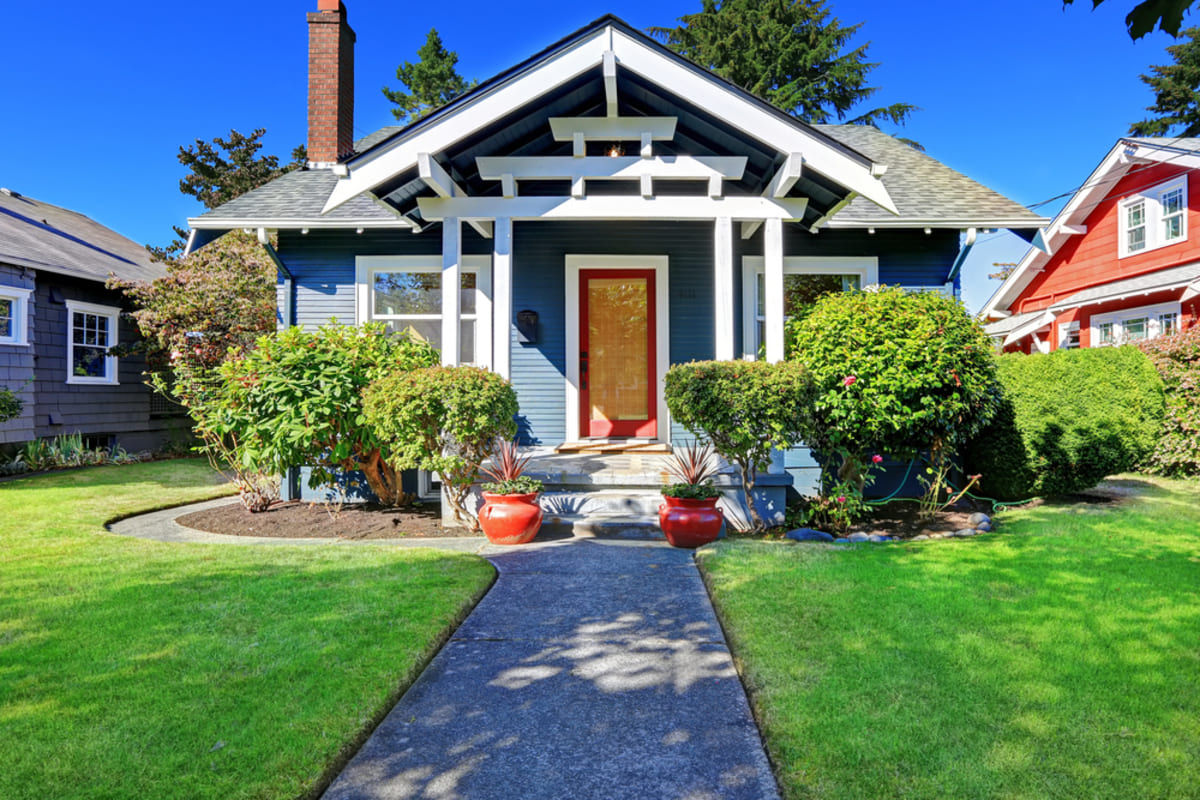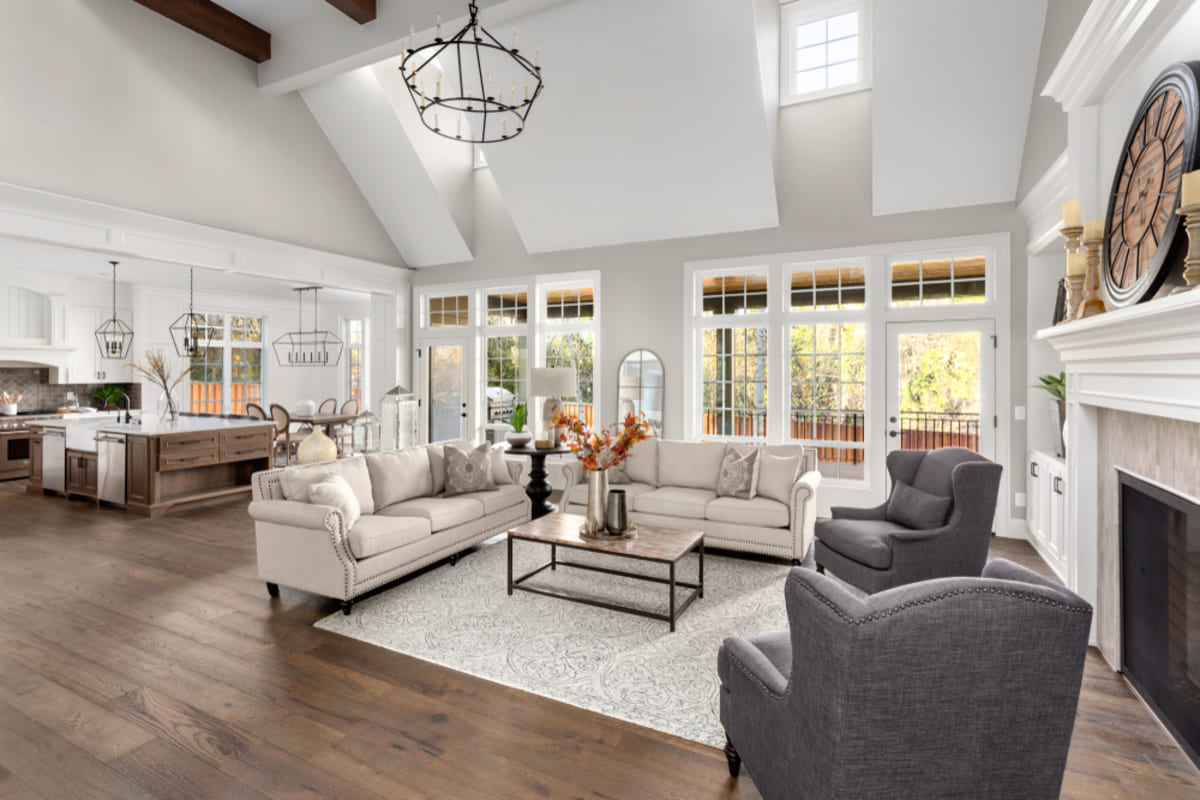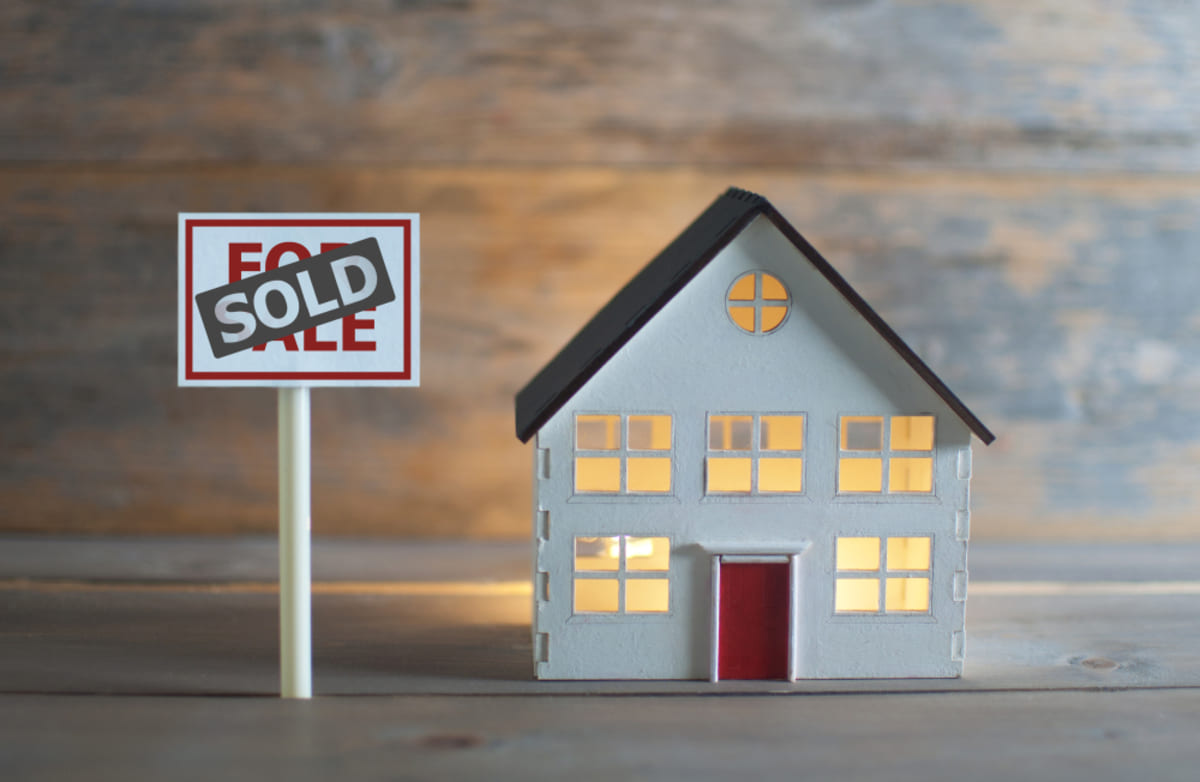In the bustling real estate market, first impressions are paramount. How a house is presented can significantly influence potential buyers' decisions, making the difference between a swift sale at a desirable price and a property that lingers on the market.
This guide will provide practical insights and tips to transform your property into a buyer's dream home.
Keep reading for home staging tips and learn how companies who provide cash for houses can save you the stress of staging a house.
The Importance of Staging and Presentation
Staging your home is an essential step in the traditional selling process. It involves strategically arranging furniture, decluttering, and enhancing the overall aesthetics of your property to make it more appealing to prospective buyers.
Effective staging can help potential buyers envision themselves living in the space and envision the lifestyle your home offers.
A well-staged home not only attracts more buyers but also has the potential to sell faster and at a higher price.
According to real estate professionals, staged homes sell for a higher value than vacant or poorly presented properties. You can create a memorable first impression and increase the likelihood of receiving competitive offers by investing time and effort into staging.
Decluttering and Depersonalizing
When preparing your home for sale, one of the steps is decluttering and depersonalizing the space. This process helps potential buyers envision living in the house and allows them to focus on its features rather than being distracted by personal belongings.
In this section, we will explore two aspects of decluttering and depersonalizing.
Removing Personal Items
The first step in depersonalizing your home is to remove personal items that may make it difficult for potential buyers to imagine themselves living there. These items include family photos, personal memorabilia, and unique décor pieces that reflect your personal taste.
Additionally, it's essential to clear out items that may make the space cluttered or overcrowded. This includes excessive furniture, knick-knacks, and personal collections.
Renting a storage unit can be a solution for temporarily storing these items until your home is sold.
Organizing and Decluttering Spaces
Once personal items have been removed, it's time to focus on organizing and decluttering each space in your home.
Start by going through each room and identifying items that can be stored or donated to create a more streamlined appearance. Use storage bins or baskets to keep smaller items organized and out of sight.
Take the time to declutter and organize closets, cabinets, and drawers as well. Potential buyers will appreciate seeing ample storage options and will be able to visualize their own belongings in these areas.
To help you stay organized throughout the process, create a checklist for each room that outlines the specific tasks you need to complete. This will help you stay focused and ensure that no area is overlooked.
Cleaning and Maintenance
A clean and well-maintained house enhances its visual appeal and gives the impression of a well-cared-for property.
This section will explore the importance of deep cleaning techniques and addressing maintenance issues.
Deep Cleaning Techniques
Deep cleaning is an essential step in preparing your house for sale. It involves thorough cleaning of surfaces, fixtures, and areas that may be overlooked during regular cleaning routines.
You can ensure that your house shines and leaves a lasting impact on potential buyers by paying attention to detail.
Here are some deep-cleaning techniques to consider:
- Carpet Cleaning: Hire professionals or rent a carpet cleaner to remove stains and freshen up carpets.
- Window Cleaning: Clean the interior and exterior of windows to allow natural light to flood in and showcase your home's views.
- Grout and Tile Cleaning: Scrub grout lines and clean tile surfaces to eliminate dirt or grime buildup.
- Appliance Cleaning: Clean and degrease kitchen appliances, such as ovens, stovetops, and refrigerators, to make them look brand new.
- Dust and Cobweb Removal: Dust surfaces, light fixtures, and ceiling fans. Don't forget to remove any cobwebs in corners or hard-to-reach areas.
- Wall Washing: Clean walls to remove any smudges or fingerprints. Pay particular attention to high-traffic areas.
- Odor Elimination: Address any unpleasant odors by identifying and eliminating the source. Consider using air fresheners or opening windows to freshen the space.
You can create a welcoming environment that leaves a positive impression on potential buyers by investing time and effort into deep cleaning.
Addressing Maintenance Issues
In addition to deep cleaning, address any maintenance issues within your house. Buyers want to feel confident that they are purchasing a property in good condition and won't require immediate repairs or investments.
Here are some maintenance issues to consider:
- Plumbing: Fix any leaky faucets, dripping pipes, or running toilets. Ensure that all plumbing fixtures are in proper working order.
- Electrical: Replace any burnt-out light bulbs, repair faulty switches or outlets, and ensure that electrical systems are safe and up to code.
- Paint and Wall Repair: Touch up paint to cover any scuffs or marks on walls. Repair any visible cracks or holes.
- Flooring: Repair or replace damaged flooring, such as loose tiles, squeaky floorboards, or worn-out carpets.
- Exterior Maintenance: Ensure that the exterior of your house is well-maintained. Repair any damaged siding, repaint if necessary, and clean the gutters.
Addressing maintenance issues not only enhances the overall appearance of your house but also gives potential buyers peace of mind that they are investing in a property that has been well taken care of.
 Enhancing Curb Appeal
Enhancing Curb Appeal
When selling your residential property, first impressions matter. Enhancing your home's curb appeal is essential to attract potential buyers and make a positive impact.
This section will cover two aspects of curb appeal: exterior repairs and maintenance and creating a welcoming entryway.
Exterior Repairs and Maintenance
Before putting your house on the market, address any exterior repairs and perform necessary maintenance tasks. This ensures that your property presents itself in the best possible condition, leaving a lasting impression on potential buyers.
Start by examining the exterior of your home for any visible damage or wear.
Repair or replace broken windows, damaged siding, or loose roof shingles. Attend to any cracks or gaps in the driveway or walkways, as these can create safety hazards and detract from the overall appearance of your property.
Additionally, take the time to freshen up the exterior by applying a fresh coat of paint to the front door, window trims, and any other areas that show signs of fading or peeling.
Welcoming Entryway
The entryway of your home is the first area that potential buyers will see, so creating a welcoming and inviting space is key. A well-maintained and aesthetically pleasing entryway sets the tone for the rest of the property.
Start by ensuring that the front door is clean and in good condition.
If necessary, repaint it in a color that complements the overall exterior. Add a fresh doormat and consider placing potted plants on either side of the entrance to add a touch of greenery.
Proper lighting is also crucial for creating an inviting entryway. Make sure all outdoor lights are in working order, replacing burnt-out bulbs. This not only enhances safety but also adds a warm and welcoming ambiance during evening showings.
Lastly, don't forget to declutter the entryway. Remove any unnecessary items such as shoes, mail, or seasonal decorations.
Furniture Placement and Layout
When it comes to staging and presenting the inside of your house, furniture placement plays a crucial role in creating an inviting and appealing space for potential buyers. Properly arranging furniture can help maximize space, improve flow, and enhance visual appeal.
Maximizing Space and Flow
Consider the size and scale of your furniture pieces to make the most of the available space in each room.
Avoid overcrowding by removing unnecessary items that may make the room feel cramped. Instead, opt for furniture appropriately sized and proportioned for the space.
Creating clear pathways and allowing easy movement throughout the room is essential for a smooth flow.
In rooms with limited space, consider using multipurpose furniture that serves more than one function.
For example, a sofa bed in the living room can double as a guest bed, or a coffee table with hidden storage can provide additional space for keeping items out of sight. This can help maximize functionality without compromising on space.
Arranging Furniture for Visual Appeal
Arranging furniture in a visually appealing way can help create a positive first impression and showcase the potential of each room.
Consider the focal points of the room, such as a fireplace, large window, or architectural feature, and arrange the furniture to highlight these elements.
For example, in the living room, position the main seating area to face the focal point, such as a fireplace or a scenic view. This arrangement draws attention to the room's standout features and creates a cozy and inviting atmosphere.
Use accent chairs or side tables to create a balanced layout and fill any empty corners.
In bedrooms, position the bed as the focal point and ensure there is enough space to move around it comfortably. Remove any unnecessary furniture or clutter that may detract from the overall aesthetic.
A clean and well-arranged bedroom can create a sense of relaxation and tranquility, helping potential buyers envision themselves in the space.
Lighting and Ambiance
As mentioned before, lighting and ambiance play a crucial role in creating a warm and inviting atmosphere.
Let's explore further the importance of natural and artificial lighting and how they can contribute to a welcoming ambiance.
Natural and Artificial Lighting
Both natural and artificial lighting have their own unique benefits in the context of staging a house.
Natural light brings in a sense of freshness and openness, making the space feel more vibrant and spacious. Maximize the use of natural light by opening curtains and blinds, allowing sunlight to flood the rooms. Clean windows thoroughly to ensure they let in as much light as possible.
In areas with limited natural light, artificial lighting comes into play. Well-placed and strategically chosen lighting fixtures can make a significant difference in how a room appears.
Use a combination of overhead lights, table lamps, and floor lamps to provide a balance of ambient, task, and accent lighting. This layered lighting approach helps to create depth and visual interest.
Creating a Warm and Inviting Atmosphere
Soft, warm light bulbs with lower color temperatures, such as 2700K to 3000K, can create a cozy and comfortable ambiance. Avoid using harsh, cool-toned lighting, as it can make the space feel unwelcoming.
Consider adding lighting fixtures that complement the style and décor of each room. Chandeliers, pendant lights, or wall sconces can add a touch of elegance to dining areas or living rooms. In bedrooms, bedside table lamps can create a cozy and relaxing atmosphere.
To showcase the potential of your house, it's important to pay attention to lighting throughout the day. Open curtains and blinds during daytime showings to let in natural light, and ensure that all lighting fixtures are in working order for evening viewings.
Adding Finishing Touches
Adding the right finishing touches can create a warm and inviting atmosphere, making your home more appealing.
In this section, we will explore two key elements of adding those finishing touches: fresh flowers and plants and artwork and decorative accents.
Fresh Flowers and Plants
One of the simplest yet most effective ways to enhance the visual appeal of your home is by incorporating fresh flowers and plants. These natural elements can instantly breathe life into any space, creating a sense of freshness and vibrancy.
Whether it's a colorful bouquet on the dining table or a potted plant in the corner, the presence of greenery can make a significant difference.
Fresh flowers can be strategically placed throughout the house, such as in the living room, kitchen, or bedroom. They add a pop of color and provide a pleasant fragrance, creating a welcoming atmosphere.
Opt for flowers that are in season and long-lasting to ensure they remain fresh throughout the duration of the home viewings.
In addition to flowers, potted plants can add a touch of nature to your home. They not only contribute to the overall aesthetics but also help create a calming and serene environment.
Consider placing plants in areas that can benefit from a burst of green, such as near windows or on shelves.
Artwork and Decorative Accents
Another way to elevate the visual appeal of your home is through the use of artwork and decorative accents. Artwork can serve as a focal point and add personality to your space.
Choose pieces that complement the style and ambiance of your home. Whether it's a large statement piece or a collection of smaller artworks, they can help define the character of each room.
When selecting artwork, keep in mind the scale and proportion of the space. A large painting can work well in a spacious living room, while smaller pieces may be more suitable for bedrooms or hallways.
Consider the color palette and theme of your home when choosing artwork to ensure it harmonizes with the overall design.
In addition to artwork, decorative accents such as vases, candles, and sculptures can be strategically placed to enhance the aesthetic appeal. These accents can add texture, depth, and visual interest to various surfaces, such as coffee tables, shelves, or mantels.
Be mindful of not overcrowding the space, as a clutter-free environment is essential for potential buyers to envision themselves living in your home.
 Receive a Stress-Free Solution and Skip Home-Staging With Cash Home Buyers in Minnesota
Receive a Stress-Free Solution and Skip Home-Staging With Cash Home Buyers in Minnesota
Preparing your home for sale is a strategic process that involves meticulous attention to detail. It goes beyond just a thorough cleaning; it includes addressing maintenance issues, enhancing curb appeal, and creating a welcoming environment.
By investing time and effort into this process, you can increase your home's marketability, potentially expedite the sale, and possibly gain a higher return on your investment.
If this process seems time-consuming and stressful, consider our team here at Homefield Homebuyers. We pay cash for homes and are committed to providing a seamless, stress-free selling experience by providing a fast and fair cash offer.
There's no need to worry about getting your home move-in ready with home staging, repairs, or even cleaning. Regardless of the condition of your house, we are ready to buy it as is.
For more information about selling your home, Download Your Essential Home Selling Checklist today!


 Enhancing Curb Appeal
Enhancing Curb Appeal Receive a Stress-Free Solution and Skip Home-Staging With Cash Home Buyers in Minnesota
Receive a Stress-Free Solution and Skip Home-Staging With Cash Home Buyers in Minnesota


Comments